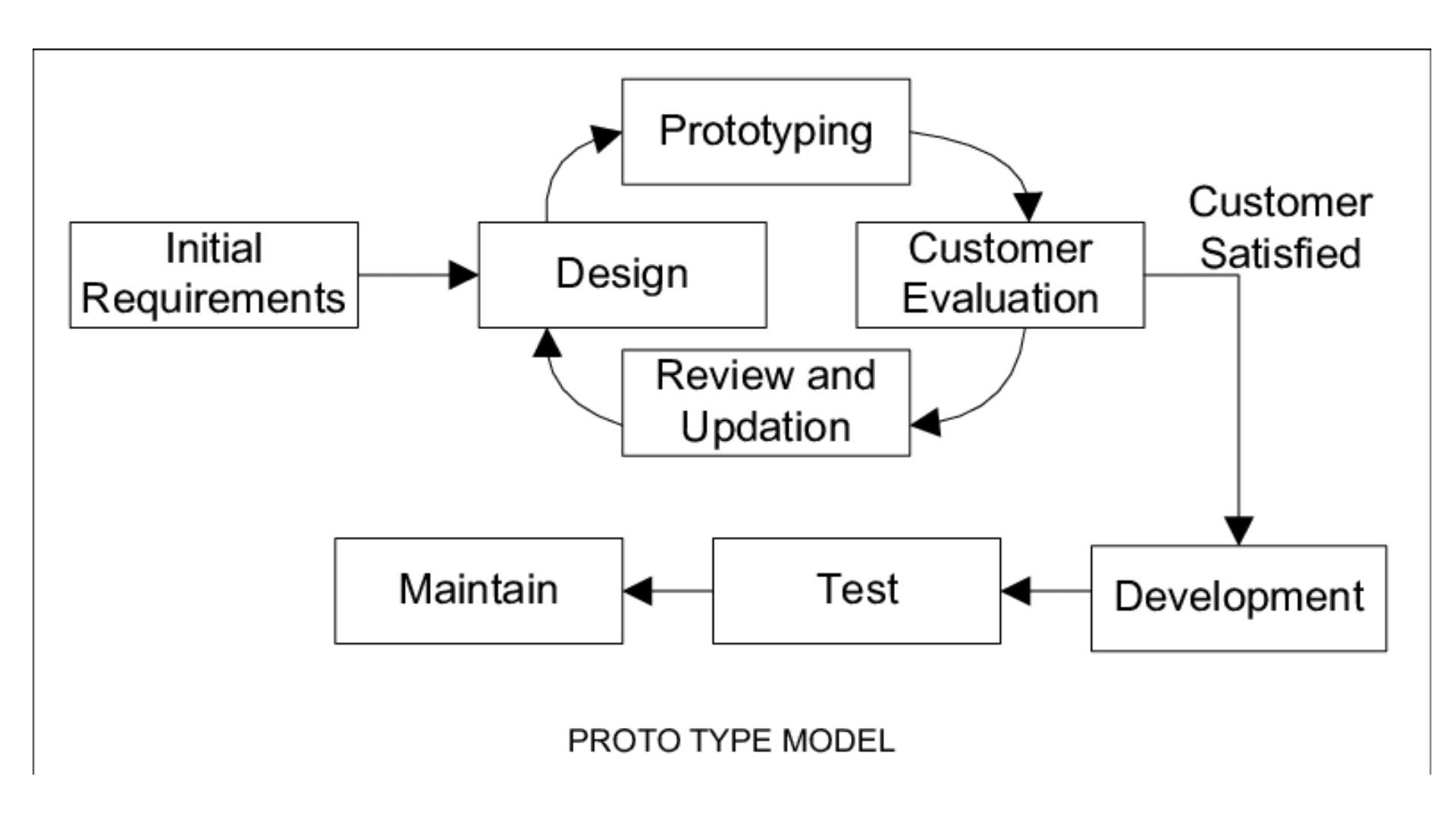Mastering Software Engineering: Diagrams, Models, and Testing Techniques
A Quick Guide to Prototype Model in Software Engineering

Introduction
According to the prototype model, a functioning system prototype must be created before the actual software is developed. A system prototype is a toy version of the actual system. A prototype typically ends up being a relatively unpolished rendition of the real system, sometimes with few functioning features, poor dependability, and ineffective performance when compared to the real software. In many cases, the client's expectations for the software product are simply broad in nature. The prototype approach may be used in this situation where there is a lack of specific information regarding the input to the system, the needs for processing, and the output requirement.
Process for Gathering Prototype Model:
- Requirements and Analyst
- Quick judgment
- Create a Prototype Evaluation or User Study
- The benefit of prototype models for product development
- minimize the possibility of inaccurate user requirements
- where requirements are flexible or uncommitted, good
- Regular, obvious processes support management.
- Reduce maintenance costs with early product marketing support.
- As the system is created side by side, errors can be discovered considerably earlier.
The Drawback of the Prototype Model
- The final product frequently evolves from an unstable or poorly designed prototype.
- substantial customer collaboration is necessary
- charges the client money
- Demands a devoted client
- challenging to complete if the consumer withdraws
- Possibly too niche and with a small market
- It's challenging to predict how long the project will take.
- Without adequate requirement analysis, design, customer evaluation, and feedback, it is simple to slip back into the code and make fixes.
- Tools for prototyping are pricey.
- To construct a prototype, specialized equipment and methods are needed.
- It takes a long time to complete.
Best practices for Prototyping
During the prototype process, keep an eye out for the following:
- When the requirements are ambiguous, prototyping should be used.
- It is crucial to carry out controlled and planned prototyping.
- The project must have regular meetings to stay on schedule and prevent expensive delays.
- Users and designers should be aware of the problems and risks with prototyping.
- A prototype needs to be approved fairly early on, and only then can the team proceed to the next stage.
- If new ideas need to be implemented, you shouldn't be scared to revise previous selections when using the software prototyping approach.
- For each version, you ought to pick the right step size.
- Early implementation of crucial features will ensure that your system will still be valuable if you run out of time.
Types of Prototyping Models
Four types of Prototyping models are:
- Rapid Throwaway prototypes
- Evolutionary prototype
- Incremental prototype
- Extreme prototype
Model of an evolutionary process
The iterative enhancement paradigm is similar to the evolutionary process model. Here, the phases are defined in a cyclical manner, just like in the waterfall model. In that it does not require a usable result at the end of each cycle, this model varies from the iterative enhancement paradigm. Requirements are implemented by category rather than by priority in evolutionary development.
For instance, a straightforward database application might implement the GUI, file operations, queries, and updates during different cycles. Before a usable product can be produced, all four cycles must be finished. Users can interact with the system using the GUI, while file manipulation, queries, and updates enable users to save and retrieve data from and add it to the system, respectively.
Evolutionary process model advantages
The risk associated with software projects is significantly decreased when EVO is used. EVO can lower costs by offering a planned, orderly path for testing. Early deliveries are made available to the marketing department thanks to EVO, which makes it easier to create documentation and demonstrations, and better match the needs of the market with the needs of the user. Early cycle content definition can be used to manage project risk. Find the important concerns early and direct your attention accordingly. Boost your chances of hitting market windows.
Use
The prototyping model should be applied when the product's needs are hazy or unstable. Additionally, it can be applied when requirements are shifting quickly. This paradigm can be successfully used in the creation of user interfaces, software-intensive high-tech systems, and systems with intricate interfaces and algorithms. It is also a very wise idea to show the product's technological viability.
